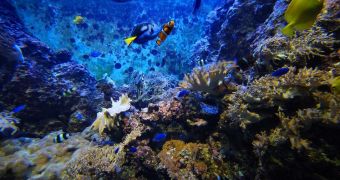The Australian Integrated Marine Observing System (IMOS) is providing its researchers with a massively improved set of tools to study the world's oceans, which includes a new array of state-of-the-art equipment installed in the waters around the continent.
The $22 million array will allow scientists in the country to look further and deeper into the water than ever before, potentially enabling a significant series of new discoveries.
Conducting such investigations in the open ocean is notoriously difficult, given the challenging conditions that govern those ecosystems. Freezing temperatures and high pressures are present at every turn, oceanographers know.
As such, the new array includes autonomous profiling floats that 'sense' breaks in the sea ice to transmit their data, as well as satellite tags that can be affixed to marine animals for observations.
Experts will also have access to underwater gliders, specialized sea crafts that can stay submerged in the ocean for months, while they are controlled from the land by pilots.
Additionally, the array included huge moorings that are engineered in such a manner that they are able to withstand some of the wildest ocean conditions nature can throw their way.
“What is happening in the open ocean is vitally important to all Australians and their understanding of local and regional climate,” IMOS Director Tim Moltmann explains.
“It drives our climate and weather extremes, is the workplace for offshore industries and maritime defense activities and contains a diversity of marine life that currently is barely described,” he adds.
“We need to observe this part of the earth system to understand how it's changing, and what the impacts might be on current and future generations of Australians,” the official argues.
The IMOS is the meeting place for experts based at the University of Tasmania, CSIRO, the Australian Antarctic Division, the Bureau of Meteorology, and the Australian Institute of Marine Science.
Scientsits with the Sydney Institute of Marine Science and the University of Western Australia also collaborate on IMOS investigations.
“This is a unique approach to monitoring the linkage between the physical properties of oceans, such as temperature and salinity, and how they influence the marine ecosystem,” says IMOS ocean and climate node leader and CSIRO oceanographer Dr Susan Wijffels.
She explains that the System is facilitating the cooperation of experts and research fields that normally do not cooperate on such investigations.

 14 DAY TRIAL //
14 DAY TRIAL //